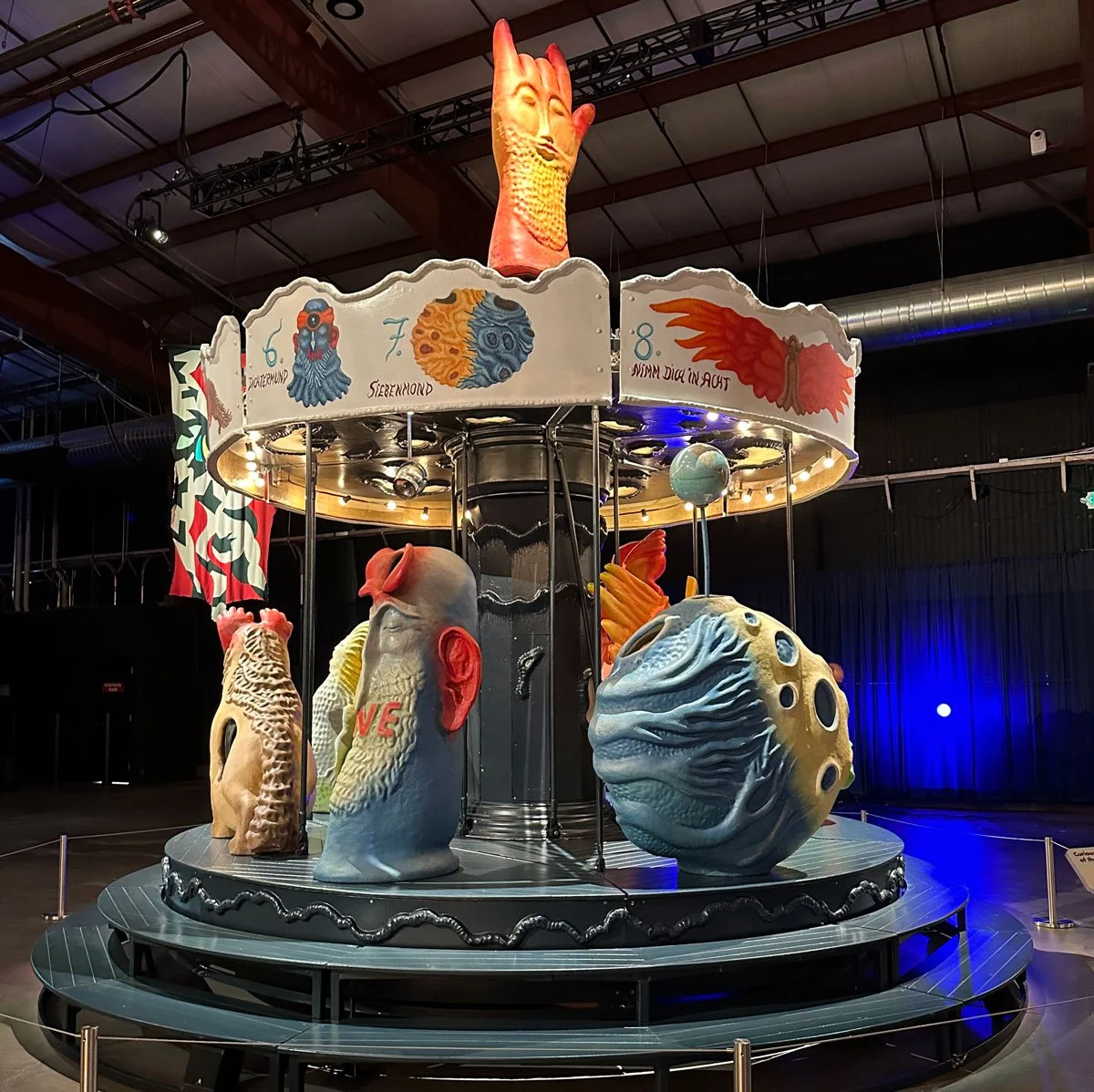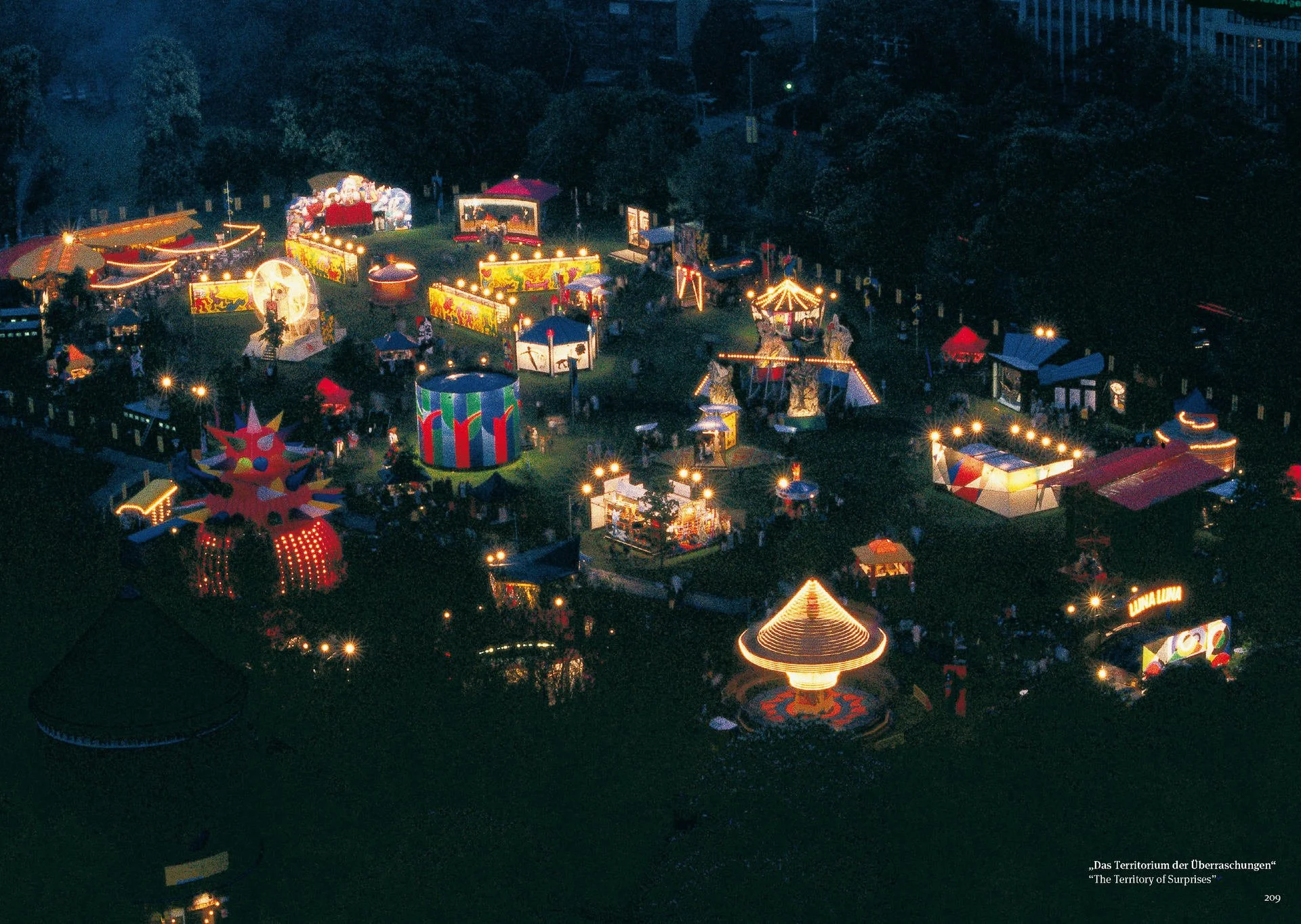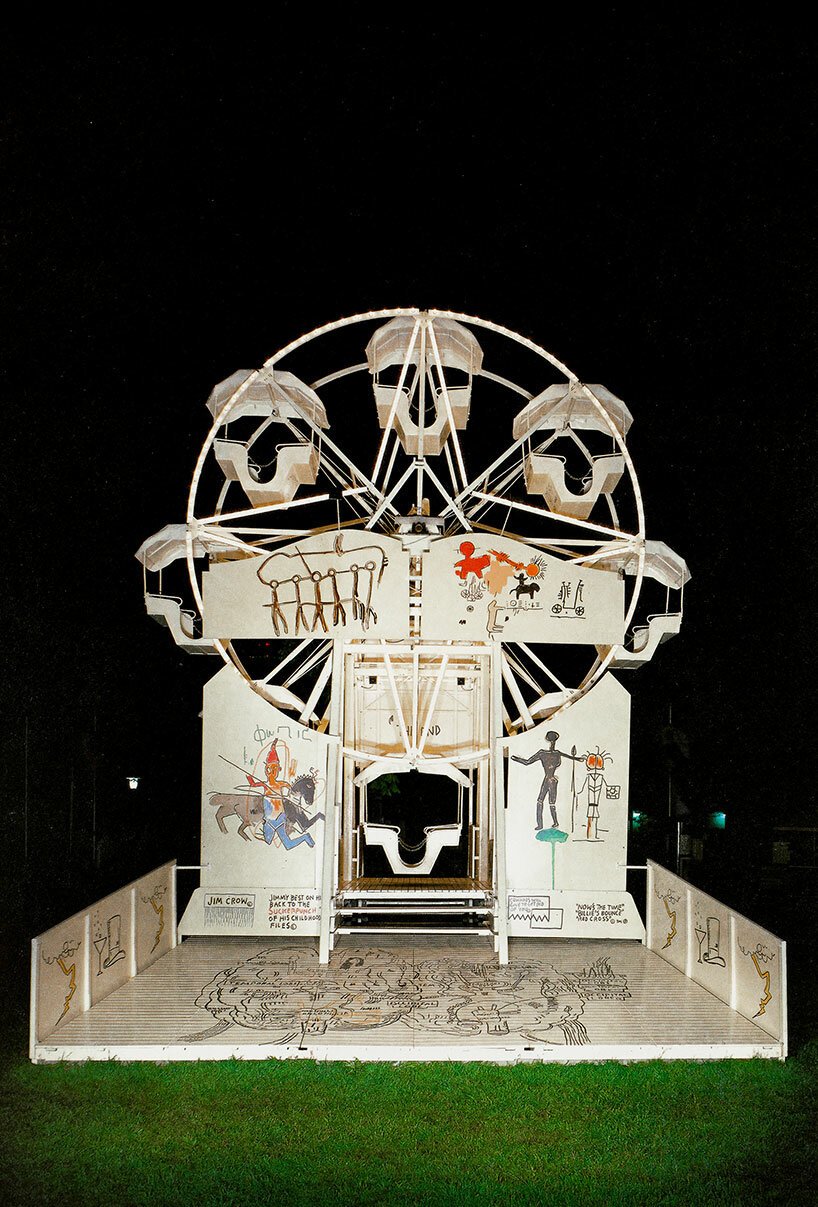Luna Luna: the story of how a group of the most well known artists of their time set out to combat postwar hatred and antisemitism with an art carnival.
Set in the very same park in Hamburg, Germany where his father had been detained by the Nazis during World War II, Andre Heller set out to have an art carnival, to combat hate with joy. The group’s artistic experiments were installed in what was once used as a staging area to deport Jews to concentration camps. “Heller thought of Luna Luna as a postwar project,”. “It asks the question: What needs to happen to make sure that fascism never takes hold again? As much as Luna Luna is a funhouse, it’s a funhouse designed to try and keep you open, curious, empathetic, and childlike so you don’t become a hard, crass person capable of hatred and anti-Semitism.”
The dream of an art amusement park, featuring the greatest artists of the era (1987) , that would merge high and low art and attract a larger audience by making art more accessible and fun started with procuring some vintage art amusements from the 1920s and 1930s (carousels, swings, a merry-go-round, and a Ferris wheel), Heller secured a $500,000 grant from a German magazine, Heller approached 16 superstar artists to decorate them: Salvador Dali, David Hockney, Joseph Beuys, Roy Lichtenstein and rising stars Jean-Michel Basquiat, Kenny Scharf and Keith Haring, who have since become superstars. The European artists, many of them Jewish, had lost their childhoods during World War II, so they understood Heller’s dream and got to work, having great fun doing it because they were reliving the childhoods they lost in a traumatic period.
The Arik Brauer Carousel is a great example of the Jewish influences represented in the rides-
Arik Brauer is renowned for his Surrealist paintings inspired by Jewish mystical traditions and dream imagery. For Luna Luna, Brauer envisioned a fantastical carousel straight out of one of his mystical dreams. The carousel was designed so that eight different characters from a fairytale doubled as seats—among them a butterfly, a wolf, a mermaid, and an anthropomorphic hand—accompanied by a song written, produced, and performed by Brauer’s daughter, Timna Brauer.
Brauer’s art was heavily influenced by his childhood in Vienna under the Nazi regime and the subsequent rise of National Socialism, as well as by religious texts such as the Torah, the Haggadah, and the Old Testament. For Brauer, “Fantastic Realism” involved implicating the viewer in scenes both surreal and authentic. Paintings such as My Father in Winter (1983), reflect his embrace of traditional landscape painting, Jewish history, and mysticism.
Brauer expanded his work in the 1980s to encompass murals, mosaics, and painted tiles in addition to becoming an accomplished singer, songwriter, poet, and dancer associated with Austropop.
For both Heller and Brauer, who lost much of their family in the Holocaust, and the other artists involved, Luna Luna was a chance to reclaim joy in a frightening and hateful postwar world. A bold statement that art and community has the power to make statements and effect change even more than we all may realize.






